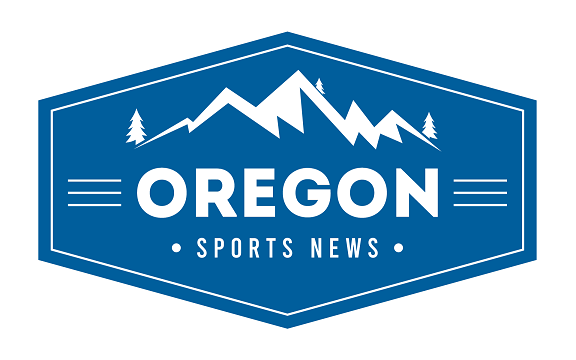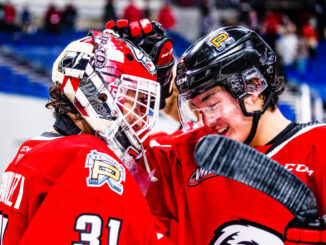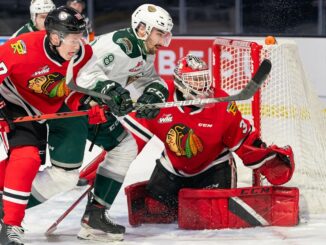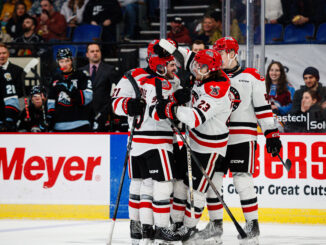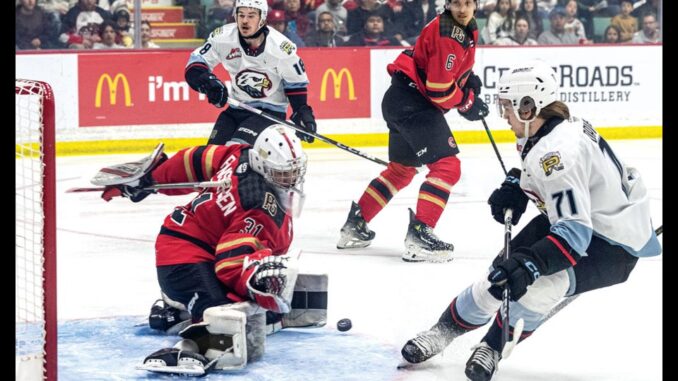
Undoubtedly, the hardest titles to win are the Centennial Cup in Junior A Hockey Canada and the Memorial Cup in the Canadian Hockey League. Why do you ask if it is so challenging?
Imagine you have four years to build a team strong enough to battle the teams in your home league, go through 4 rounds of playoffs, AND then a round-robin tournament where even one loss can ruin your trek. That’s what faces teams who compete for the ultimate prize. Worse yet is what happens to many after the championship is won. Many times, it’s rebuilding. That can be rough, losing games because you field a young and inexperienced team and the morale of those players, who are leaving home for the first time in long-distance travel where they could be away from family for months. In addition, they are billeted. This means these players are suddenly cast into another person’s home without knowing anyone. This is why the teams become so bonded. Practice, schooling, and traveling are with the team, so the only family they will know is the “boys.” When a team goes “All In,” they say they feel they have a team at a level that goes very deep into the playoffs. League titles are the best barometer of a team, as they have won against all teams in the league.
The Memorial Cup is unique in that it is almost a showcase of players destined to impact professional leagues, wherever that may take them significantly. With advanced-age players, most likely playing with each other for the last time, emotions can get very high. Unlike the NHL, where a player can usually have a shot at multiple Stanley Cup attempts, this is rarely true in Memorial Cup play, in that the older players will age out. The younger players will be the trainers for the new crop coming in and will most likely not see the same success their team had the year before.
Imagine at 16 and facing this. Many people say I can’t wait to leave home, but these players are usually from small communities; hockey and home life are really the only things they know. Training camps see players as young as 15, and many don’t make it past this stage at the opening camp; they return to Junior teams. The 16-year-old players are on the bubble, with some getting a shot in later preseason tournaments or as replacement players with injuries. 17-year-old players may have played sparingly the year prior but are now looking to break out. 18-year-old players are hoping to break out and be on the sightlines for scouts in anticipation of the NHL draft. However, there are just 200 spots possible in the draft, and they are competing with leagues all over North America, and now the world and that space is quite cramped. At 19, if they have been drafted, they are attending NHL camps at the start of the season and hopefully inking an ELC. The draft is always a nail-biter as players hope for the phone to ring. They can be drafted at 19, and teams sometimes look to see if a trend is happening for the player. At 20, this is, without a doubt, the toughest year. If they have been drafted and signed, the NHL decides whether they employ them in their feeder system. If they haven’t been signed, they could return to the talent pool to be redrafted, as the draft status they gained two years before has expired. The player would have to go over the process again. In addition, they can also attend training camps and hope to sign up with an NHL team. There is also a possibility that they may sign directly with the AHL or ECHL team. The chances of NHL dreams at that point are pretty much vanished.
They could also consider overseas. Agents look at teams worldwide to find the best fit for their clients. Some stay within hockey as players, some become coaches, and some take the scholarship package that they’ve earned while playing to look at a career outside of hockey.
Then there’s the trades. They have changed the rules where someone at 16 can’t just be traded, and at 17, there is a great deal more discussion with families than before. Many years ago, there were horror stories of players being traded while on the bus to a town and being dropped off in the middle of nowhere, waiting for their next team to grab them. There’s also the logistics if they drive. If they have a car, they might have to drive to meet up with the team, and although they are compensated for gas, etc, it’s a lot of pressure to put on someone that young.
There is also the possibility that the team’s “cycle” isn’t going to lead to a championship of any kind, and after they leave, a year or two down the road might be the time to make a run.
Coaches are forever trying to tinker with the team, finding the right chemistry and the right fit for certain players with others. This is a never-ending process as they look to find the mix that will give them a deeper run into the playoffs.
Those on a championship run benefit a great deal when scouted. Indeed, during the season, scouts look for players who can fit into the next level once they finish junior hockey at 20. Playoffs add a new wrinkle as the longer a team goes, the fewer teams there are to assess, and with it comes more scrutiny. Goaltenders who are seldom drafted when they first become eligible become much more of an option in their 19 or 20-year-old year. Rarely will you find a team looking for a championship using a younger goaltender unless they are on fire. Joshua Ravensbergen, at 17, for Prince George, was perhaps an unusual example of a lights-out goaltender, and he will be looked at by scouts if he is drafted in his first eligible year.
Most teams in the final rounds of their league championship have a heavily laden older team. Portland Winterhawks are no exception, with 13 players on the roster who will play in their 20-year-old year next year. That means the Hawks will have to pare down to the maximum of three come the second week of October. Some have already signed NHL deals and may be able to head to the AHL if not their parent club. From there, the AHL will have to decide if they are strong enough to play in the AHL or head one level down the ECHL. This is where strategy plays a significant role. Players drafted in the NHL’s first two rounds have a better shot at the parent club or the AHL; later rounds are more murky.
So what about the undrafted players, those who don’t get a deal from the NHL? What becomes of them? There are places to play, but they aren’t in North America. There are some professional leagues overseas, in England, France, and other Scandinavian countries, or in Russia or China. Even Japan has some places, but the money may be the issue. It’s a question of whether they want to play or not.
Portland, as mentioned, has 11 players currently who will turn 20 in the following season.
The Hawks will already lose three players who will turn 21 this year. Gabe Klassen, James Stefan, and Jack O’Brien. Only O’Brien hasn’t been drafted or signed yet, but he has been to several camps and may sign elsewhere as a Free Agent player.
Then there is the glut of players who are 19 now but will be 20 when the next season starts.
Jan Spunar, goaltender. He has not been drafted but has attended several NHL Camps. His position is limited, as teams usually carry only two goaltenders. Being from the Czech Republic, he can easily go back home to play if he is not able to get a deal here. Will Mike Johnston want a 20-year-old goaltender when he has another already here that he’s traded for?
Justin Maric, goaltender. Limited action at the start of the season when Spunar was at NHL camp. He had only suited up for four games for Moose Jaw when he was traded, as Portland needed a netminder. Then he got hurt, so they traded for Nick Avakyan. Nick has since been sent to play in the Alberta Junior Hockey League, 9. Maric hasn’t been drafted, and with few games played, he isn’t likely to hear his name called.
Nick Avakyan, goaltender. He was traded for when Maric went down with injury, and the only other netminder was 16-year-old Luke Brunen. In a numbers game, Avakyan was sent to Alberta to play. In Maric’s case, it may have been he was used to being a backup and didn’t mind sitting where Avakyan wanted to play, so Alberta would give him that chance. While he may return to training camp, his chances of being in a Hawk uniform again are low at best.
James Stefan, forward. Surprisingly, Stefan has been drafted but not signed. He has impressive numbers, both goals and assists, and he provides strong offense. His offseason may see Edmonton sign him.
Kyle Chyzowski, forward. Undrafted, but a quality player. He has put up points, been a force on the backend, and is a strong center iceman.
Josh Davies, defense. Drafted by Florida and part of the trade to Portland alongside Tyson Yaremko from Swift Current. Davies is older than Yaremko by a year, and Portland knew this in the trade, giving them two years at least of players.
Marcus Nguyen, forward. This was a breakout year for him by far. Even though it doesn’t show on numbers, he was always in the mix, leading the charge, and has been even more dominant in playoffs, averaging nearly a point a game.
Nate Danielson, forward. At the trade deadline, the Hawks got Nate, who had been captain of the Brandon Wheat Kings. Since his arrival, he has been a major force on this squad; Detroit has signed him, and his point production has many seeing him as a solid addition to the Red Wings. He was drafted in the first round and will very likely end his junior hockey career this year with Portland.
Josh Mori, defense. The Hawks drafted this quiet and unassuming player late in the draft. Though he doesn’t have many points, he has played in every regular-season game and has added a goal and three helpers in the playoffs so far this year.
Marek Alscher, defense. He is an import player drafted by Florida, which has signed him. He has been consistent in point production the past two regular seasons and has been strong in the playoffs. Florida could take him to training camp. He could have gone last year, as European players can go a year earlier than North American players, but Portland, I am sure, is glad he was here another year.
Tyson Jugnauth, defense. Until this year, Kamloops held Tyson’s rights, but he committed to college play. The Winterhawks traded for him and signed him to a WHL Standard Contract. His appearance in Portland has been incredible. He has averaged over a point a game in the regular season and the playoffs. Though he hasn’t been drafted yet, he may take some looks in camps this year.
Ryder Thompson, defense. He hasn’t had a breakout year but has been consistent with points per year and playoffs. He’s not a flashy player, but tough as they come. He is one of those on the bubble in Portland, as he hasn’t been drafted but has attended NHL camps.
Luca Cagnoni, defense. He has been drafted but has not signed with the San Jose Sharks. He has had very strong numbers the past couple of years, averaging nearly a point a game last year and nearly 1.5 points a game this year. He has averaged a point a game in the playoffs this year, numbers the Sharks, who saw him in camp last year, are monitoring closely this year.
So, where does this leave the Hawks? They have 3 defencemen on the roster with some time left and 7 forwards. They had several in camp last year who were close to making the team, so expect that to happen. One is the brother of Winterhawks Hudson Darby, who still has a couple of years left in junior.
Several players were cut at the last minute during the camp this past year, and they will be about ready to go once the season starts with preseason training camps in August.
It is doubtful that female goaltender Morgan Stickney will play on the squad this year. Turning just 16, President, General Manager, and Coach Mike Johnston usually shy away from exceptionally young goaltenders, no matter how good. Goaltenders take time to mature, probably a year or two to show potential. Because he’d like her to play as much as she can, she may stick with St. Mary’s another year.
This is what to expect in the offseason. Drafts, ELC, and ATO, also known as Amateur Tryouts of those who aren’t further along in playoffs, occur. Then, there is what is known as the Traverse Tournament. Many signed and unsigned players will attend with their respective clubs, looking to make an impression. Unsigned will hope to get an invite to Main Camps; signed players are looking to increase their stock value when Main Camps start.
When Training Camp starts in August, the team will take on a new look but still provide top-notch entertainment. Like usual, a few players will head off to NHL camps, or agents will pull them from junior camps to avoid injury and hope they’ll be placed on the big team or one of the farm teams.
By the second week of October, rosters will be frozen, and fans can then see if some players are headed back or kept up. The decisions then begin regarding how many overage players, with a maximum of 3, will have to be cut from the roster. That’s always the toughest where fans have known players in their system for years, only to lose some due to the numbers game.
It will all start again. This is just a small snippet of the life of a Junior Hockey player who wants to advance to the next level.
OK, now on to happier moments, shall we?
In other Winterhawks news, The US Priority Draft and Prospects Draft occurred this week.
Portland selected Tyler DiCarlo from Anchorage, Alaska, as the 20th goaltender and followed it up with the 42nd selection, Finn Spehar from Minnetonka, Minnesota, as a forward. The following day was the Prospects draft, where again the Hawks picked up to 13 rounds, starting in position 20th.
The players chosen were Jordan St Louis, Alasandro Domenichelli from Switzerland, Caden Leibel through a trade with Everett, Liam Reed, Cash Brebant, Becker Wenkus through a trade with Red Deer, Hudson Sayers, Nixon Mah, Freddie Schneider, Blake Clark and Nikita Mikalov. Portland passed in the 13th round. There are two European players, which means they think both Marek Alscher and Jan Spunar may move this year and are hedging their bets in case that happens, as they are allowed 2 Europeans on their roster. Should either Marek or Jan return to Portland, the Hawks can either waive the returning players or send Euros back.
The CHL continued its fourth-round action.
In London, the Knights hammered Oshawa Generals 6-1, where the Knights were a perfect 2 for 2 on the powerplay, and in Quebec, a shock with Drummondville shutting out Baie Comeau 5-0. Both series resume on Saturday. The Portland Winterhawks will conduct business at home against the Moose Jaw Warriors Friday and Saturday night before heading to Moose Jaw for games 3, 4, and, if necessary, 5, before returning to Portland. This will mark the last time one will see a person in the current lineup, as the Memorial Cup is held exclusively in Saginaw, Michigan.
